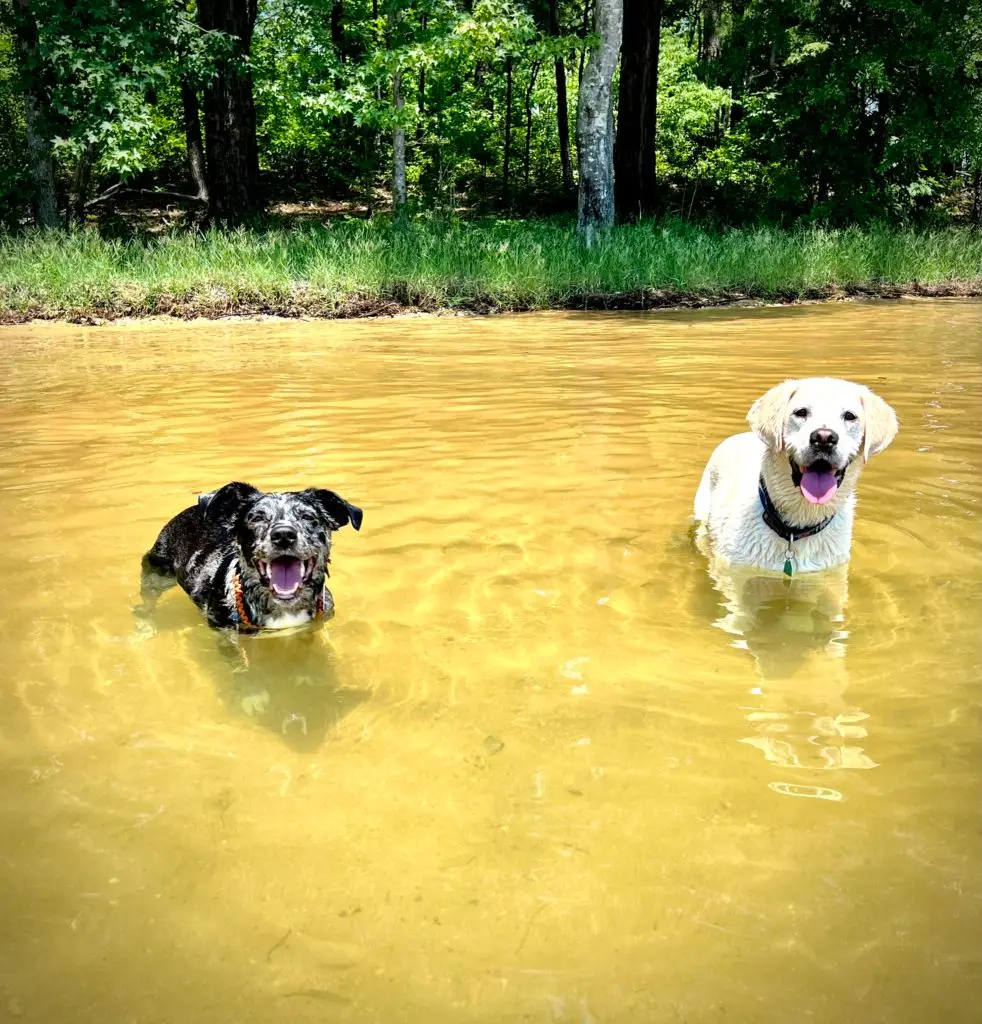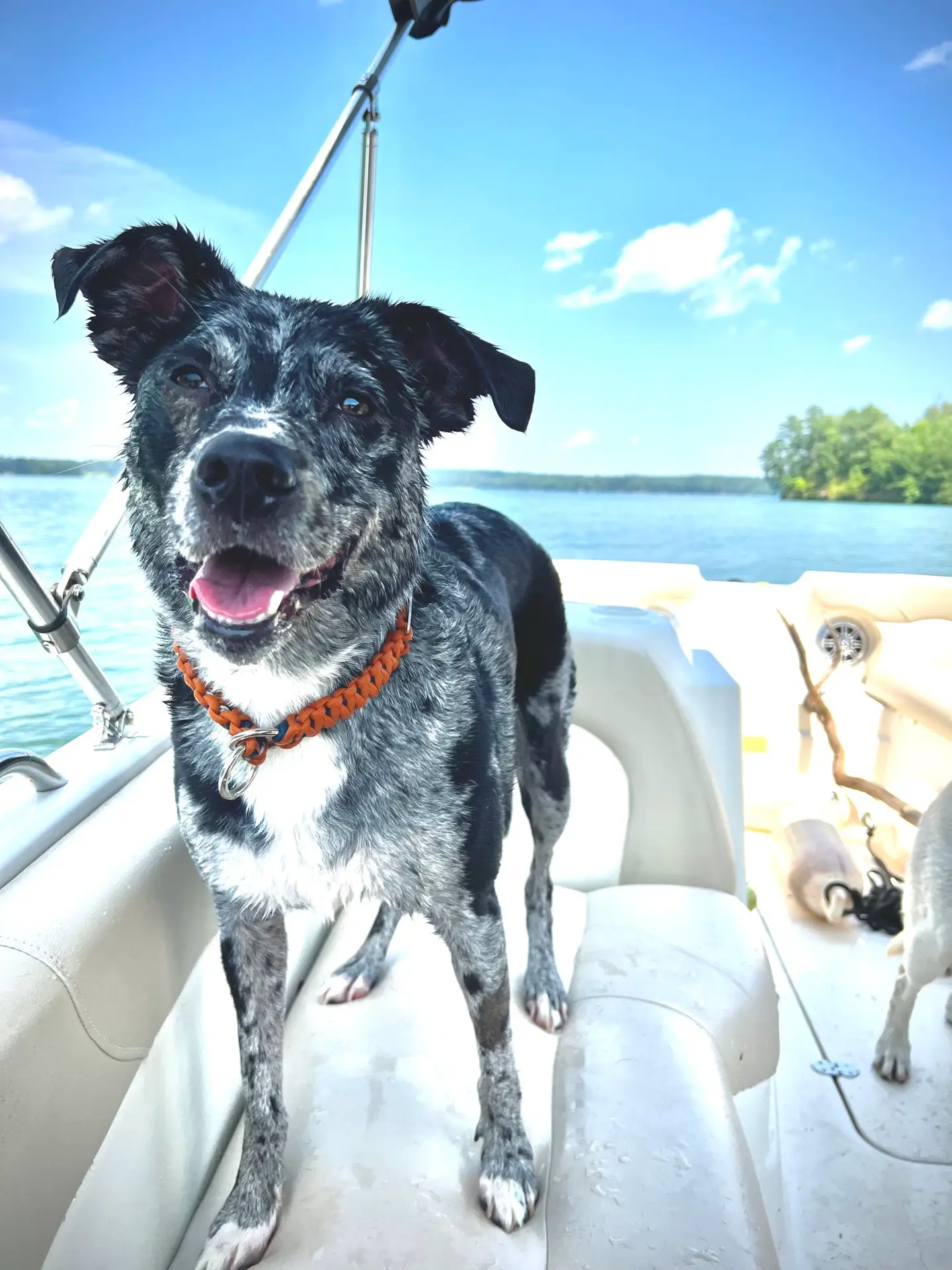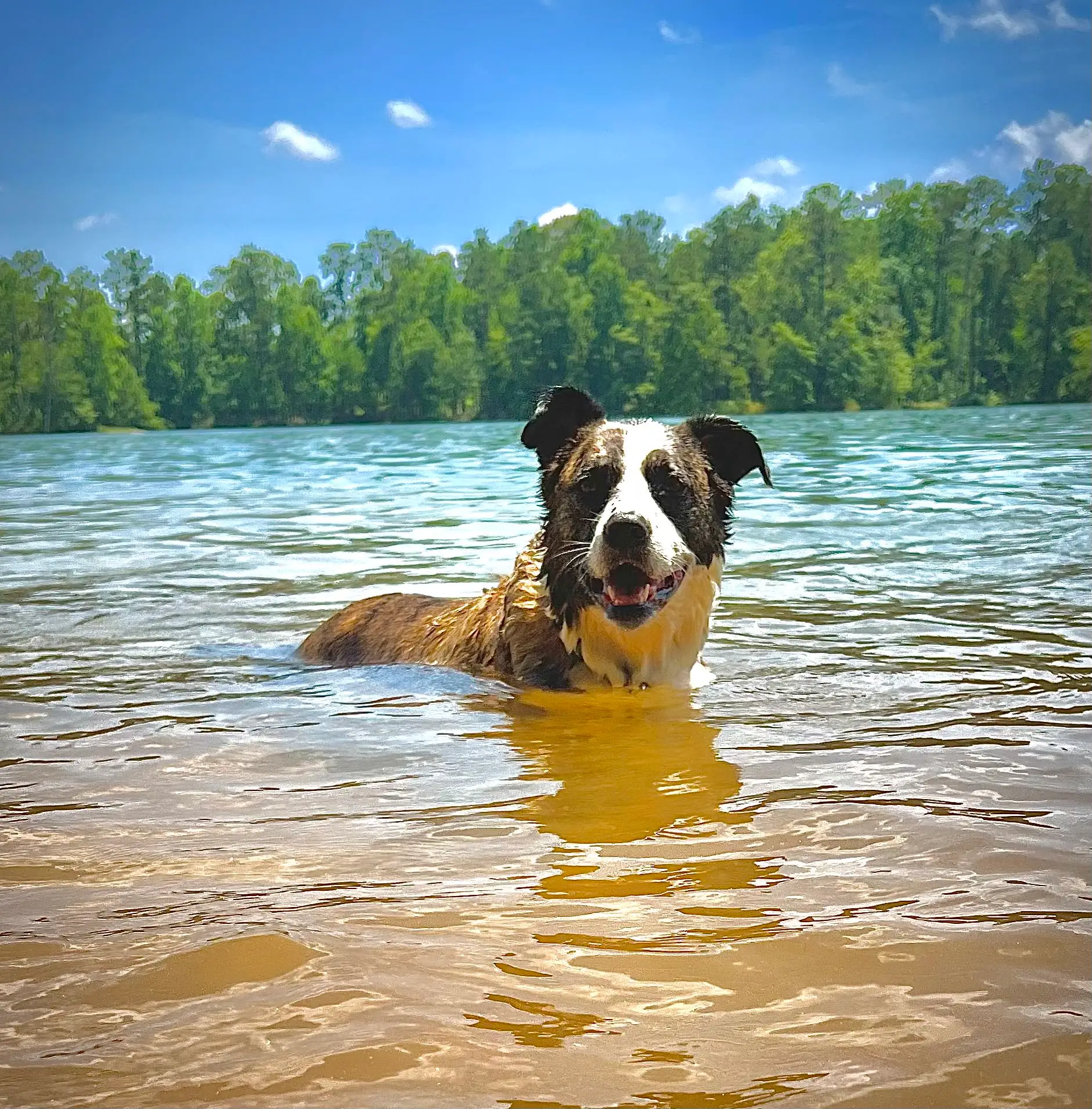Speaking from experience, there are few things more fun than getting to take your four-legged best friend to the lake with you. I’m fortunate enough to come from a dog-loving family, so when we go to the lake, there are usually at least four dogs enjoying the day with us and their joy is contagious. I recently had a training client say to me, “I’d love to take my dog with us, but I have no idea how that would go!” So I decided to sit down and list out some tips and tricks for an awesome, dog-friendly lake (or beach) trip!
Life Jackets and Swimming
There are a few things to consider when it comes to the safety of your pup at the lake! Number one is general water safety. If your dog is not a strong swimmer, they will need to wear a properly-fitted life jacket. My dogs are very strong swimmers, but I still sometimes put life jackets on them for boat rides because if they fall (or jump!) out, or if we getting into a boating accident and they hit something and can’t swim, a properly-fitted life jacket will keep them afloat and their heads above water until I can get to them. You want something with bright colors, a sturdy handle, heavy-duty flotation material, and reflective strips. We love Kurgo and Ruffwear brands.
If your dog is not a strong swimmer or has never been introduced to water, you will want to take the time to do a slow and positive introduction. NEVER just throw them in and expect them to figure it out. It is not true that “all dogs instinctively know how to swim.” Ideally, you will want to find a place with a gradual incline into the water so that they can enter the water at their own speed. Get into the water with them and make it fun and enticing. Use their life jacket handle as a way to guide them back to the shore or ramp and teach them how to exit safely. If they have a favorite toy (make sure it floats!), you can use that as an incentive.

Training and Impulse Control
Another safety tip to consider is whether or not your dog has a good off-leash recall. If not, your dog needs to be kept on a leash or long line (even in the water) so they don’t get away from you. Trust me, you don’t want to have to swim after your dog who decided that chasing geese was more fun than the tennis ball you brought! Having good impulse control and training a solid recall are imperative to having an enjoyable lake weekend with your pup! Our article on Impulse Control has more information, but remember that if you know you can’t trust your dog with freedom, then they need to be contained in some way (leash, “place,” fencing, etc)! This is not only safer, but responsible dog ownership. And if you need help with what building impulse control and recall might look like for you, I encourage you to work with a local trainer!
Healthy and Safety
While you always want to keep an eye out for signs of heatstroke, the water is an excellent way to keep dogs cool! Make sure they have access to fresh water and shade, and if they don’t swim, simply splashing them with cool water can help as well! There are other things, though, that you’ll want to keep an eye on. The first is water intoxication. Water intoxication occurs when dogs ingest so much water that their natural balance of electrolytes is disrupted, leading to a disturbance in brain function. Many people who have seen dogs experience this first hand assume that the dog ingested some kind of toxic algae or had access to antifreeze, but it can actually happen in clean water. It is rare, but potentially fatal. Symptoms of water intoxication can include: lack of coordination, lethargy, nausea, bloating, vomiting, dilated pupils, glazed eyes, light gum color, and excessive salivation. Advanced symptoms include difficulty breathing, collapsing, loss of consciousness, and seizures (The Wildest). Make sure your dog takes some snack breaks throughout the day so they have more in their stomach than just lake water and monitor their behavior closely as they swim and splash. In addition, if at the beach or in a sandy area of the lake, make sure they aren’t swallowing a lot of sand when they’re scooping up their ball or toy. Sand ingestion can quickly kill a dog.
Swimmers tail is a less life-threatening but still somewhat painful thing that can occur to your pup while playing in the water. “Also known as Acute Caudal Myopathy (aka limber-tail syndrome), swimmer’s tail typically affects large-breed dogs, causing the dog’s tail to droop after too much time playing in the water. This type of overexertion can strain the muscles that keep a dog’s tail up and wagging. Along with tail limpness, the base of the tail is often stiff, and the dog may experience pain” (The Wildest).
And finally, be aware of your surroundings and be on the lookout for potentially dangerous things like fishing hooks, snakes and other wildlife, and other dogs. A combination of situational awareness and impulse control (in both you and your dog) is imperative here. When in doubt, keep your dog close to you. Having a dog-inclusive first aid kit is an excellent idea and can help you keep your pup stable on the way to the vet if something does happen. There are pet first aid kits on the market, but it’s always an excellent idea to ask your vet for any recommendations on what to include!



This post came out much scarier than I intended, but I hope it doesn’t deter you from enjoying a day at the lake or beach with your pup! It can be SO MUCH FUN if done with intentionality and with safety in mind. I’m a huge advocate of incorporating your dog into as many aspects of your life as possible because I believe that having fun with your dog helps you build your relationship, which in turn leads to a better behaved and more well-rounded pet! So get out there and have a blast! I KNOW your dog will appreciate being included and spending time with their favorite people.



3 Responses
Great info! I’m wondering what to do about hot pavement and dog walking this summer. Early morning? Late night? Grassy park? Dog booties etc.
That’s a good question! If you have the ability to walk during cooler times of day, that’s definitely the easiest! Encouraging them to walk in the grass instead of the concrete/pavement can also help. Dog booties are great for protection, but require some training to get your pup comfortable! We also encourage people to check your pup’s feet often and carry cold water (and maybe some paw balm). If you start to see any redness, swelling, or blistering, stop the walk immediately if possible and get them to your vet!
I enjoyed your article! We’ve made lots of Great Lake memories with our puppy dogs!